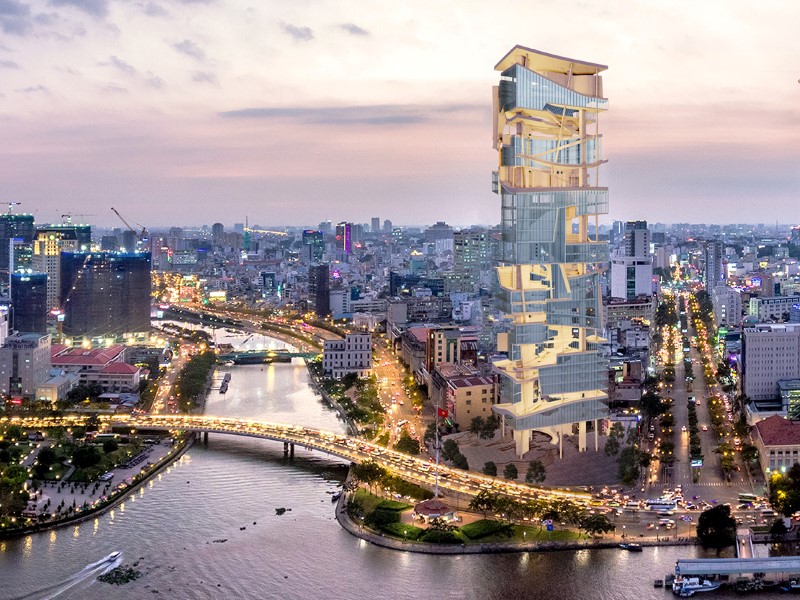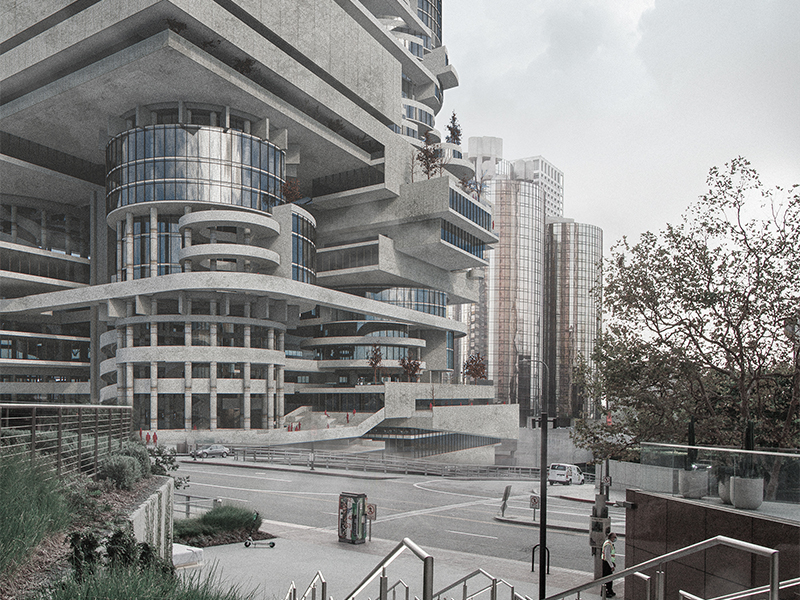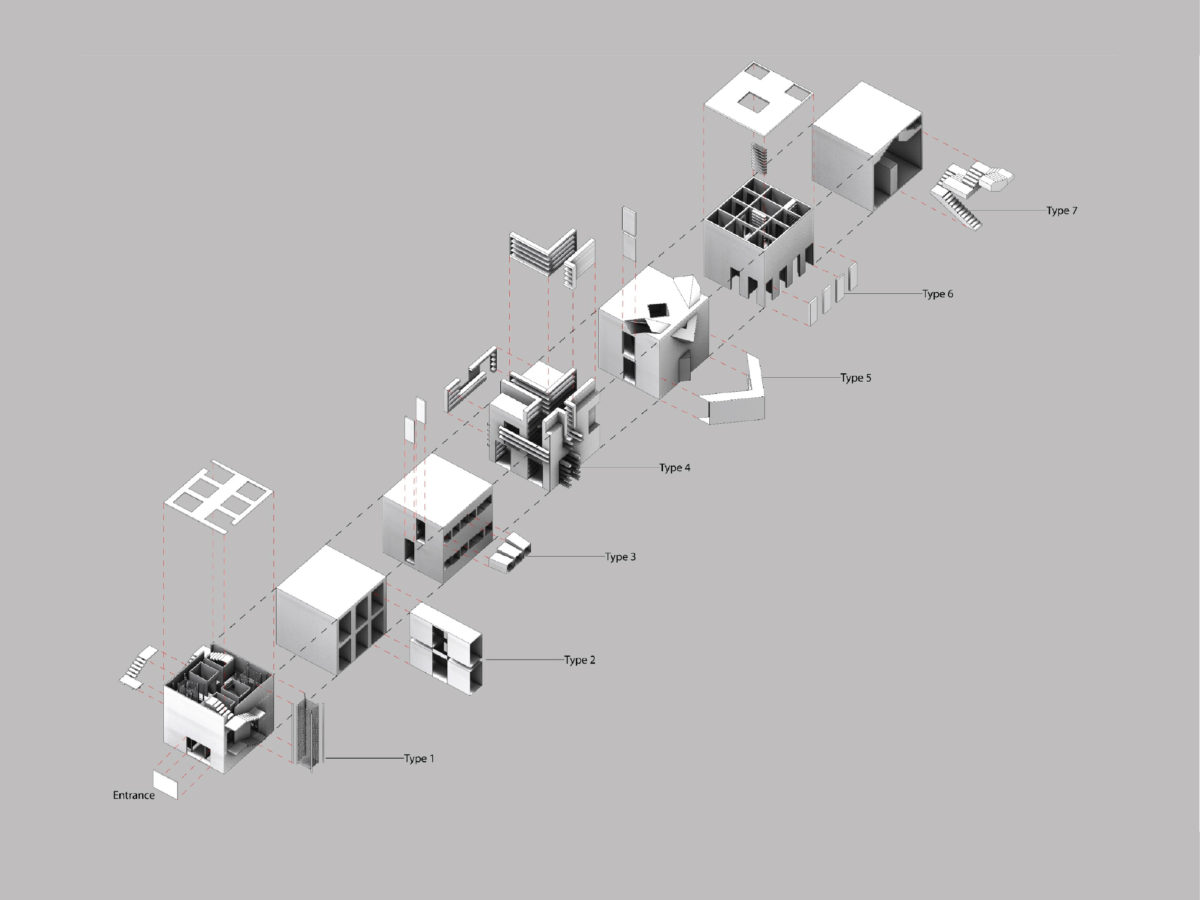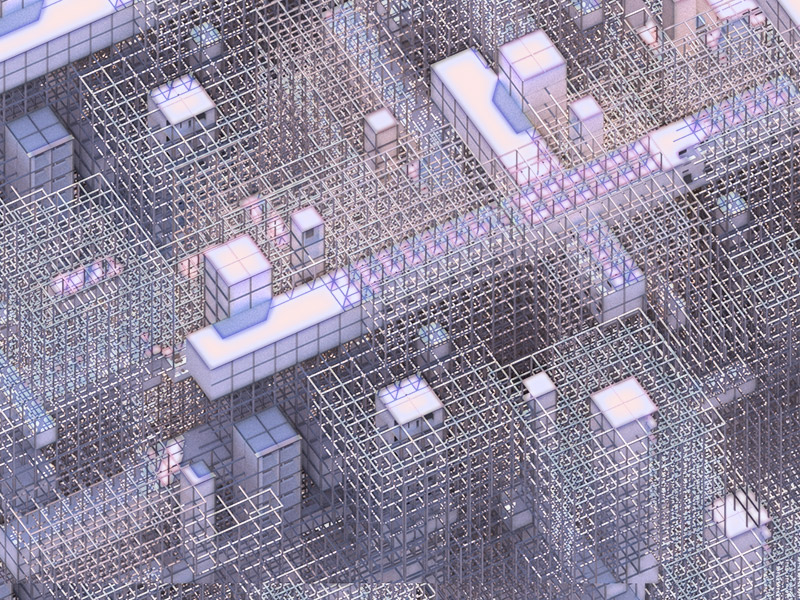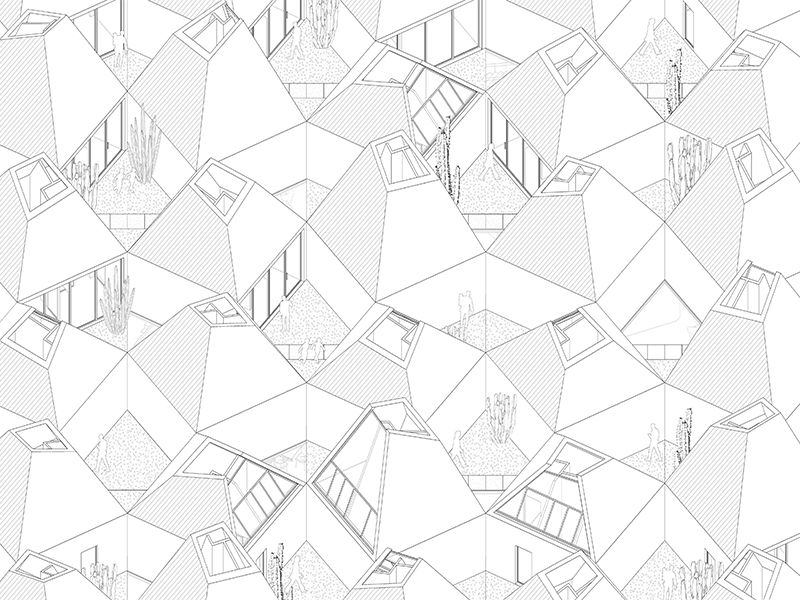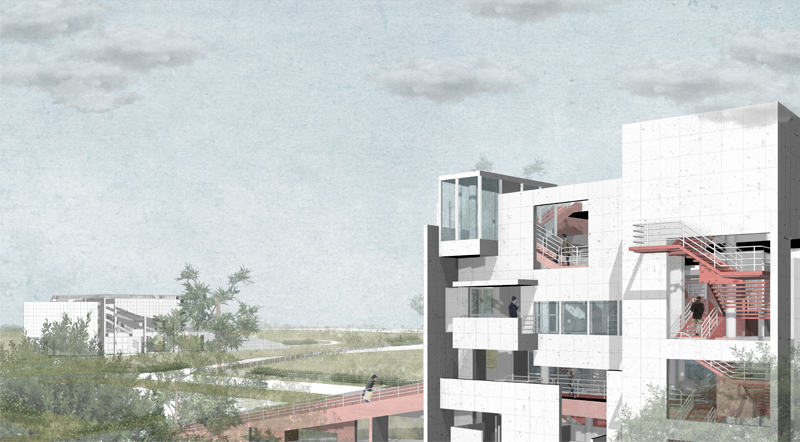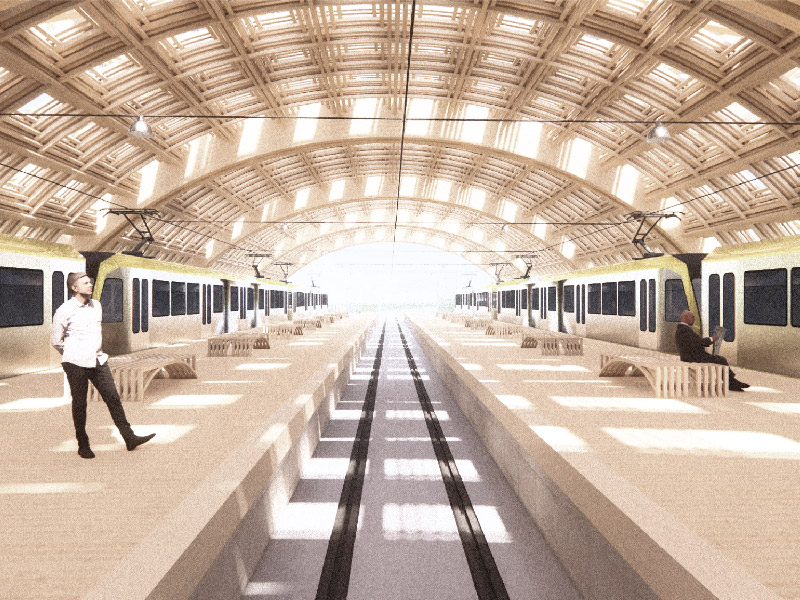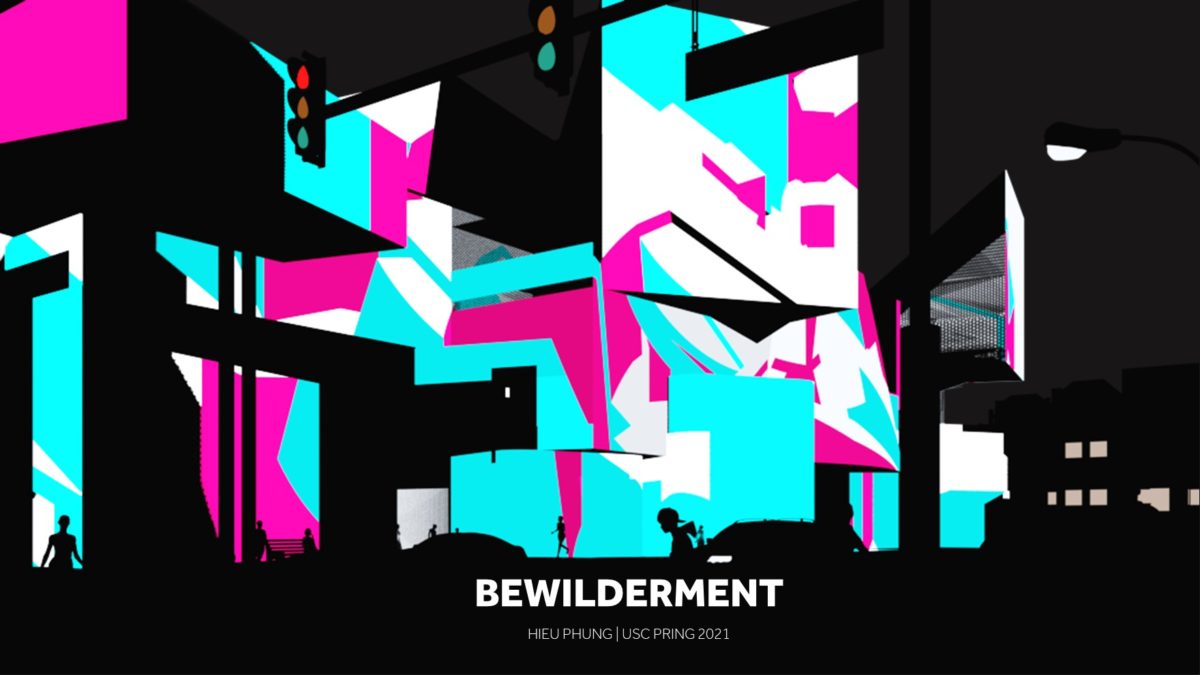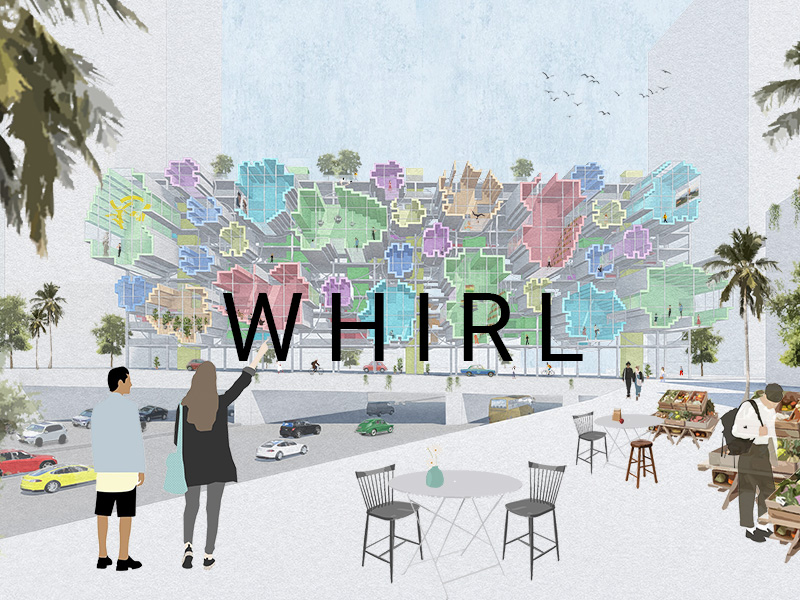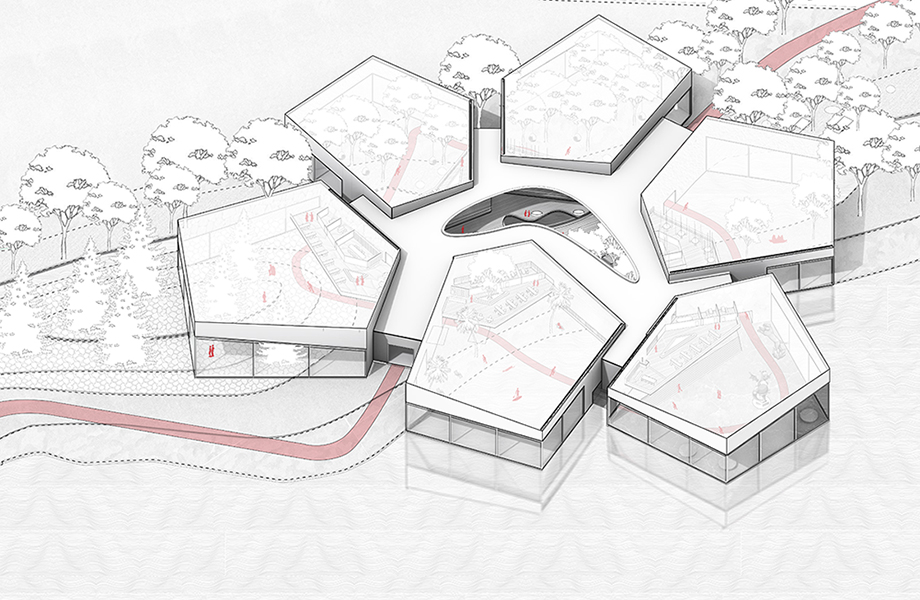This thesis focuses on the definition of a boundary not as a division, but a condition of difference. A meeting point defined by the characteristics of adjacent parts, this definition can be illustrated by the granular complexity of the terrain and natural landscapes, where boundaries are organic transition zones formed by changes in elevation, curvature, density, texture, transparency, etc. Can the reading of the map and the way we navigate space become a method to generate alternative spatial qualities? By extracting the formal and organizational language of terrain boundaries, the project aims to stress the ability of diverse and contradictory parts to form an architecture whole. How does this alternative design approach redefine architecture as a complex system of contextual, programmatic, functional, and experiential relationship that transcend scale, meaning, and interpretation?
